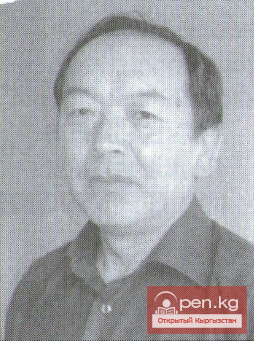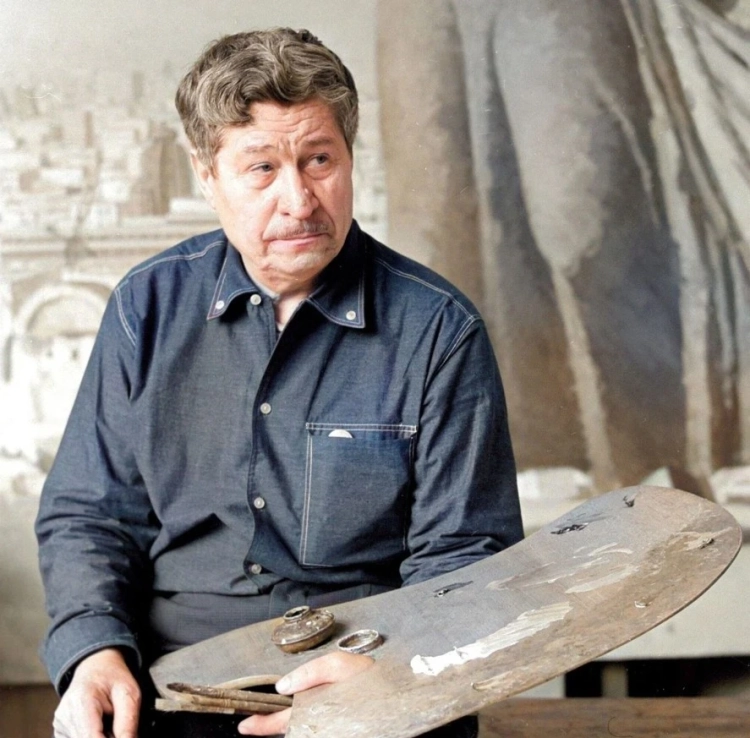
Exhibition Hall of the Union of Artists of the Kyrgyz Republic "Oak Park" named after...

The creativity of Gapar Aitiev in the 1960s and 70s was exceptionally fruitful: it was the peak of...

Leonid Fedorovich Deimant primarily worked in the genre of thematic painting, often without any...

The evolution of consciousness - part of the overall process of historical development of humanity...

Integration of Artistic Cultures The international integration of artistic cultures has deepened...

The artistic principles of constructivism were built on the basis of formal solutions to a number...

Jumabay Umetov is an applied artist by nature and profession, who engages extensively in landscape...

Dzhunushev Zhakshibek Dairbekovich Painter. Born on October 12, 1978, in Bishkek. In 1999, he...

Mukhanbetov Mukhtar (1937-1996) Painter. Honored Worker of Culture of the Kyrgyz Republic. Born on...

Idrisova Cholpon Musakeevna Art historian. Born on November 19, 1960, in the Kant district of Chuy...

Chuykov Semyon Afanasyevich (1902 -1980) Painter. People's Artist of the USSR. Full member of...

Outstanding contemporary artist Semyon Afanasyevich Chuykov In the post-war period, as in previous...

Usubaliev Bekten Ashimbaevich Painter. Born on October 5, 1958, in the village of Kurmenty,...

Diversity of Monumental Painting and Decorative Plastic Arts. In the 1960s, the traditional...

Baimyrzaev Alykul Graphic artist. Honorary Worker of Education of the Kyrgyz Republic. Born on...

Until the 1960s, Ignatiev's work predominantly featured Kyrgyz themes, primarily related to...

Joоmart Kadraliev also resorts to the language of allegory, but his allegories have a more...

Expressive genre sheets were created by S. Chokmorov ("Men Sitting," 1964), A. Ostashev...

Chalanov Ishembek Applied artist. Honored Worker of Culture of the Kyrgyz Republic. Excellent...

A remarkable phenomenon in Kyrgyz visual art was the creativity of Sabyrbek Akylbekov. His...

Success was more easily achieved through traditional means of plein air painting, especially...

Asyrankulov Talgat Karimbaevich Film artist. Born on May 15, 1962, in the city of Jalal-Abad. In...

Berdikeev Zhanibek Kanbolotovich Painter. Born on December 18, 1964, in the village of Chayek,...

Kadyraliev Asanbek Rajapovich Painter. Born on January 9, 1958, in the village of Chon-Kemin. In...

Erbol Dogdurbek Born on February 9, 1986, in the city of Karakol, Issyk-Kul region. In 2003, he...

Moldokhmatova Aina Asanbekovna Art historian. Born on March 31, 1953, in the city of Frunze,...

Osmonov Abdray Painter. People's Artist of the Kyrgyz Republic. Born on December 27, 1939, in...

Date - 20/03/2018 - 25/03/2018 Time - All day Location: Exhibition hall of the Union of Artists of...

Mamasaliev Abdzhali Abduganievich Applied artist. Born on July 31, 1967, in the village of...

New Trends in Herzen's Creativity While S. Bakashev represents the decorative direction of...

Artistic and Stylistic Range of Young Artists' Works Possessing a gift for painting, most of...

Belek Jumabaev, endowed with vivid imagination and sharp observation, was the first to paint...

Kyrgyz Masters of the Easel In the 1970s, Murat Bekdzhanov established himself as a fine...

Zhunusaliev Ruslanbek Painter. Born on June 1, 1976, in the village of Koy-Tash, Aksy District,...

Torobekov Suuitbek Satymbekovich Painter. Honored Worker of Culture of the Kyrgyz Republic....

Zarkunov Marat Asanovich Monumental painter. Born on September 16, 1959, in the village of...

An exhibition of reproductions of paintings by world-famous French artists - Van Gogh, Cézanne,...

Recently, in the loft "Tsех," six artists working in different genres of contemporary...

"When creative people cease to appear, revolution is inevitable." The concept of A....

Paintings by Kubanychbek Amankozhoev As mentioned earlier, the first artist to somewhat depart...

In a recent lecture by art historian Aina Moldokmatova at the Gapar Aitiev Museum of Fine Arts,...

Anarbekov Shekerbek Myrzabekovich Painter. Born on February 15, 1955, in the village of Budennoe,...

Inokentyeva Nyurguyana Nikolaevna Painter. Born on January 20, 1974, in Yakutsk, Republic of...

Bazharbaev Jumabek Painter, graphic artist. Born on June 28, 1962, in the city of Tokmok. In 1982,...

Creative Team on a Breakthrough to Kyrgyzstan The period under consideration is a time of intense...

Nuraliev Marat Temirkulovich Painter. Born on April 11, 1966, in the city of Frunze. In 1988, he...

Osmonaliev Saparbai Talipovich Painter. Born on August 18, 1956, in the village of Amanbaev, Kirov...

Musayev Baktybek Imashevich Painter. Born on July 11, 1956, in the city of Przhevalsk, Issyk-Kul...